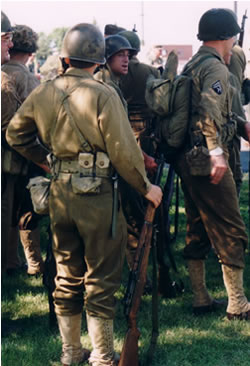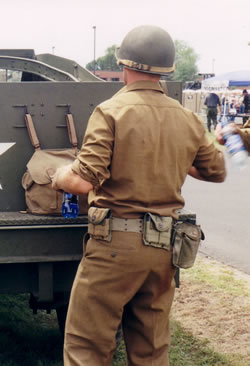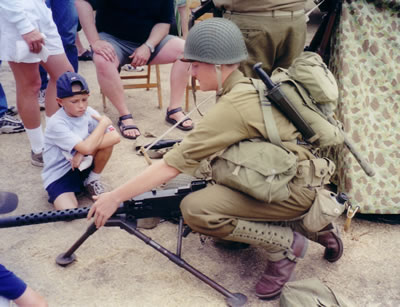| Infantry
Uniforms & Equipment |
 |
Two rear views of uniforms. On the left, another GI is equipped with the M1928 haversack. Note the soldier with the canteen on his left hip and bayonet on his right. The soldier on the right has two pouches for M1 Carbine ammo clips. He’s just pulled a bottled water from an M1936 musette bag clipped to the rear of an M3 White Scout Car. Note the greener tones of the uniform on the left. Also, there is not the same variation between the right soldier's shirt and trousers as there is in the first photo on the page. At a 2001 expo in Alexandria, Minnesota this fully equipped GI below demonstrates the .30 machine gun. With the exception of the boots, his uniform is the same as the previous soldier’s. Under his arm is the canvas gas mask bag issued after the Normandy invasion (GIs often discarded the mask and carried extra ammo or personal items in the bag). On his back is the M1928 field pack and meat pouch. This GI has the later folding shovel wedged into his pack, which replaced the “T” handled M1910 entrenching tool. The top of the bayonet scabbard clipped onto the pack and is retained by a tab at the bottom. One can clearly see how the canteen clips to the web belt.
Go to Page 2-tss- |
 |
 |
 |
 |
 |
 |
 |
 |
 |
 |
 |
 |
|
95q.jpg)


